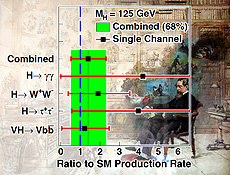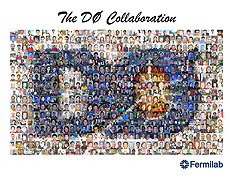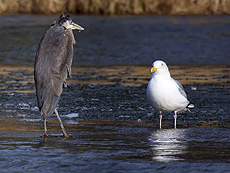|
Thursday, Feb. 27
- Breakfast: Greek omelet
- Chicken noodle soup
- Chicken fajita sandwich
- Chicken cacciatore
- Smart cuisine: stir-fried beef and vegetables
- Italian loaf sandwich
- Assorted pizza by the slice
- Tex-Mex grilled-chicken salad
Wilson Hall Cafe Menu |
|
Friday, March 1
Dinner
Closed
Wednesday, March 6
Lunch
- Grilled lemongrass beef and noodle salad
- Almond cake
Chez Leon Menu
Call x3524 to make your reservation.
|
|
March wellness offerings, fitness classes and discounts
Wellness offerings including wellness classes, fitness classes, Walk 2 Run, Book Fair and employee discount information for March.
Wellness:
Stress Management: Enhancing Your Coping Skills
Wednesday, March 6, noon to 1 p.m., Curia II
Presenter: Kathy Burke, Employee Resource Systems Inc., your employee assistance program
Fitness classes:
Walk 2 Run
This free 10-week program can help you improve your fitness, reduce cholesterol and lose weight by gradually increasing your running potential. The first week we will begin walking and then run 2 minutes. At the conclusion of the 10 weeks, we will complete a 30-minute continuous run. You are welcome to join us regardless of age, speed or level of experience.
Thursdays, March 7 to May 9, 4:45 to 5:30 p.m., meet outside Wilson Hall, east side.
FREE
Butts and Guts
Mondays, March 4 to April 29 (no class April 1), noon to 12:45 p.m., Fitness Center
$58/person
Wednesdays, March 6 to April 24, noon to 12:45 p.m., Fitness Center
$58/person
Muscle Toning
Tuesdays and Thursdays, March 5 to April 30 (no class April 9-16), 5:30 to 6:30 p.m., Fitness Center
$82/person
Yoga
Tuesdays, March 12 to April 30, noon to 1 p.m., Ramsey Auditorium
$90/person
Book Fair - one day only:
Monday, March 11, 10 a.m. to 3 p.m.
Employee discount:
Delnor Health and Wellness Center
For more information, contact Jeanne Ecker in the Wellness Office at x2548 or at jecker@fnal.gov.
|
Merging ES&H and the Office of Quality and Best Practices
Fermilab's Office of Quality and Best Practices recently moved under ES&H (Environment, Safety & Health) to form ESH&Q. Nancy Grossman, ESH&Q section head, and Jed Heyes, manager of Quality Services, provided the following information about the changes:
Why is the quality department a good fit with ES&H?
Quality and ES&H go hand in hand because all of the functions are integrated into the way we do business at Fermilab. The departments' missions, goals and processes are all similar. For these reasons it made sense to combine the two groups and form ESH&Q. It is common to see ESH&Q functions together in the same organization within the DOE complex as well as in corporations.
Will the functions of the quality department change? If so, how?
No, the overall quality-related functions such as performing assessments, coordinating the laboratorywide consolidated assessment schedule, liaising with the DOE Fermilab Site Office, coordinating contractual self-assessments, reviewing proposed changes to the prime contract, maintaining QA program documents, managing the Suspect/Counterfeit Items program and participating in improvement teams will remain the same for the foreseeable future.
What are the benefits of the new ESH&Q organizational structure?
The departments will be more efficient by consolidating resources, processes and assessments. They will also be able to build more depth into the areas of training, communication and Human Performance Improvement implementation.
Will there be a noticeable impact for employees or users? How will things change?
The change people might notice is a higher level of integration of quality processes with ES&H processes. An example of this is the possible formation of a Quality FESHCom Subcommittee.
Have questions regarding the ESH&Q changes?
Contact Nancy Grossman, Martha Michels or Jed Heyes for more information.
|
Documentary follows Fermilab scientists
From the Chicago Tribune, Feb. 26, 2013
Brendan Casey isn't a typical movie star, but "Science at Work" isn't a typical movie.
The documentary, produced by 137 Films, was commissioned by Fermilab in Batavia with the intention of putting a friendly face on the scientists who have changed physics the world over. Casey is one of a group of scientists chosen for the filmmakers to follow over two years as they study three frontiers: energy, intensity and cosmology.
Read more |
|
Painting the full picture of the Higgs
 |
With all analysis channels updated to use the full Tevatron Run II data set, DZero enhances the picture of the newly observed Higgs-like particle and tests its consistency with the Standard Model.
|
Determining whether the new particle observed last year is the Standard Model Higgs boson requires a look at the big picture. The Higgs boson plays an important role in the Standard Model, giving mass to quarks, charged leptons and the weak force carriers, but it is not the only possible explanation for why those particles have mass. Every property of this new particle must be measured to verify that it is a Standard Model Higgs boson and not evidence of exotic new physics. Some of the most important properties to confirm are its preferences for decaying into other particles, a task no single analysis can perform independently.
Last July, the DZero collaboration published results based on the full Tevatron Run II data set for searches focused on the Higgs boson decaying to bottom quarks. In combination with the CDF collaboration, those results contributed to showing evidence for a Higgs-like particle decaying into a pair of bottom quarks. The same month, LHC experiments reported the discovery of a Higgs-like particle.
Since CDF and DZero presented their results, analysis teams have continued their endeavors to update the results for each Higgs decay channel to make use of the full data set, improving the methodology for each analysis along the way. These efforts have been completed, and the full data set is now used for nearly all channels in a new combination of Higgs boson studies at DZero.
There is an overall excess of data that is consistent with the production of a 125-GeV mass Higgs boson. Each of the four main decay channels considered contributes to this excess and favors the Standard Model Higgs boson hypothesis. The combined analysis also considered exotic models where the Higgs disfavors decaying to quarks and leptons or is influenced by the existence of an undiscovered fourth generation of quarks. These results are the culmination of many years of effort by the DZero collaboration and, once combined with Higgs boson results from CDF, will help further enhance the picture of the Higgs boson.
—Mike Cooke
 |
This result is the culmination of many years of work by the DZero collaboration.
|
|
Fair feathered friends
 |
A heron and gull enjoy the warmth of each other's company on a semi-frozen kidney pond early one morning. Photo: Marty Murphy, AD
|
|
Virtual photons become real in a vacuum
From Photonics, Feb. 26, 2013
ESPOO, Finland, Feb. 26, 2013 — By changing the position of a mirror inside a vacuum, virtual particles can be transformed into real photons that can be experimentally observed.
In a vacuum, there is energy and noise, the existence of which follows the uncertainty principle in quantum mechanics. These virtual particles in the vacuum can momentarily appear and disappear, and can be converted into detectable light particles.
Read more |
|